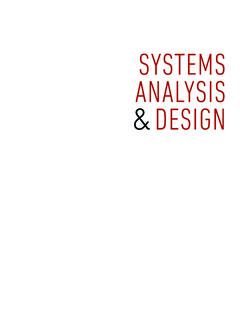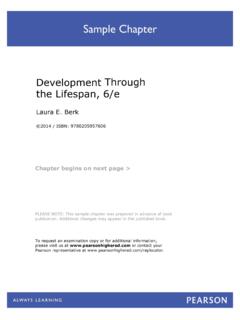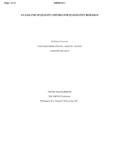Transcription of TWELFTH EDITION PRACTICAL RESEARCH - Pearson
1 330 Hudson Street, NY NY 10013 PRACTICAL RESEARCHPLANNING AND DESIGNTWELFTH EDITIONPaul D. LeedyLate of American UniversityandJeanne Ellis OrmrodUniversity of Northern Colorado (Emerita)with Laura Ruth JohnsonNorthern Illinois 111/01/18 11:20 AMDirector and Publisher: Kevin M. DavisContent Producer: Janelle RogersPortfolio Management Assistant: Casey CoriellExecutive Field Marketing Manager: Krista ClarkExecutive Product Marketing Manager: Christopher BarryProcurement Specialist: Carol MelvilleDevelopment Editor: Pamela BennettCover Designer: Cenveo Publisher ServicesCover Photo: Cavan Project Management: Norine Strang, Cenveo Publisher ServicesComposition: Cenveo Publisher ServicesPrinter/Binder: LSC CommunicationsCover Printer: Phoenix ColorText Font.
2 Garamond 3 LT ProCopyright 2019, 2016 by Pearson Education, Inc. or its affiliates. All Rights Reserved. Printed in the United States of America. This publication is protected by copyright, and permission should be obtained from the publisher prior to any prohibited reproduction, storage in a retrieval system, or transmission in any form or by any means, electronic, mechanical, photocopying, recording, or otherwise. To obtain permission(s) to use material from this work, please visit of third party content appear on the page within the text, which constitute an extension of this copyright otherwise indicated herein, any third-party trademarks that may appear in this work are the property of their respective owners and any references to third-party trademarks, logos or other trade dress are for demonstrative or descriptive purposes only.
3 Such references are not intended to imply any sponsorship, endorsement, authorization, or promotion of Pearson s products by the owners of such marks, or any relationship between the owner and Pearson Education, Inc. or its affiliates, authors, licensees or of Congress Cataloging-in-Publication DataNames: Leedy, Paul D., author. | Ormrod, Jeanne Ellis, author. | Johnson, Laura Ruth, : PRACTICAL RESEARCH : planning and design / Paul D. Leedy (late of American University), and Jeanne Ellis Ormrod (University of Northern Colorado (emerita)) ; with Laura Ruth Johnson (Northern Illinois University).
4 Description: TWELFTH EDITION . | New York : Pearson Education, Inc., [2019] | Includes bibliographical references and : LCCN 2017059151| ISBN 9780134775654 (alk. paper) | ISBN 0134775651 (alk. paper)Subjects: LCSH: RESEARCH : LCC L43 2019 | DDC dc23 LC record available at 10: 0-13-477565-1 ISBN 13: 978-0-13-477565-41 211/01/18 11:20 AMiiiNEW TO THE TWELFTH EDITIONE very year brings new strategies for RESEARCH design, data collection, and data analysis. Accordingly, this TWELFTH EDITION of the book has been revised in many ways.
5 Discussions of some topics have been expanded often with new, illustrative examples and new top-ics have been added; meanwhile, sections that few of our readers were finding useful have been either reduced in length or eliminated altogether. Technology-based strategies have been updated to include new software options. And as always, every page has been revis-ited every word, in fact and many minor changes have been made to tighten the prose or enhance its clarity and noteworthy changes in this EDITION are (a) a better balance between quanti-tative and qualitative methods than was true for the eleventh EDITION .
6 (b) the addition of a new chapter on action RESEARCH , with room for it being made by the elimination of the chapter on historical RESEARCH (which reviewers have almost unanimously been telling us they don t assign in their classes); and (c) a reorganization of what were formerly Parts III, IV, and V (Chapters 6 through 12) into a new Part III ( RESEARCH Designs, with Chapters 6 through 10) and a new Part IV ( Data Analyses, with Chapters 11 and 12). The last of the changes just listed the reorganization of chapters was due in large part to the fact that researchers are increasingly drawing from both quantitative and qualitative traditions in their efforts to address important RESEARCH problems and significant changes in this TWELFTH EDITION are the following: Chapter 1.
7 Revised discussions of Step 1 and Step 4 in the RESEARCH cycle, with Figure also being revised accordingly; expansion of the section on philosophical assumptions to include phenomenology and action- RESEARCH orientations; replacement of the key term hypothesis with RESEARCH hypothesis to contrast it with the less formal hypotheses of everyday life; introduction of purpose statement as a key term; replacement of the key term juried with the term peer-reviewed, to reflect more popular terminology. Chapter 2. Discussion of RESEARCH problems broadened to include RESEARCH ques-tions (the term more commonly used in qualitative RESEARCH ) and purpose statements; updated and expanded discussion of mind-mapping software, with new illustrative example (Figure ).
8 New section on identifying a theoretical or conceptual framework for a RESEARCH study, along with (a) a new example and graphic illustrating the nature of a conceptual framework and (b) an additional suggestion to identify or create a theoretical/conceptual framework in the PRACTICAL Application feature Writing the First Section of a Proposal. Chapter 3. Introduction of key term open-access journal; updated and expanded dis-cussion of online databases; movement of what was formerly Table ( Commonly Used Styles in RESEARCH Reports ) to this chapter, where it is now Table ; more specific recommendations for annotating sources during an in-house or online library search; new paragraph regarding the importance of writing an honest, nonbiased literature review.
9 Use of excerpts from a more current (2016) doctoral dissertation in the Dissertation Analysis 311/01/18 11:20 AMiv Preface Chapter 4. Addition of the concept unit of analysis as a key term; explicit distinction between the key terms assessment and measurement (to create a better balance between qualitative and quantitative strategies in this and succeeding chapters); overhaul of the eleventh EDITION s section Considering the Validity of Your Method to give a better balance between qualitative and quantitative approaches, with the new head-ing Enhancing the Credibility of Your Findings (the in-depth discussion of internal validity in this section has been moved to Chapter 7); addition of follow-up studies as a strategy for enhancing the credibility of a RESEARCH project.
10 Revision of the eleventh EDITION s section External Validity to offer a better balance between quantitative and qualitative methods, with a new heading Enhancing the Generalizability of Your Findings ; renaming of the eleventh EDITION s section Identifying Measurement Strategies to Choosing Appropriate Assessment Strategies, with a reorganization and many revisions to achieve a better quantitative/ qualitative balance; new Exam-ples column in Table ( Contrasting the Four Types of Measurement Scales ); in many instances, replacement of the term assessment instrument with the more inclusive term assessment strategy; revision of the eleventh EDITION s section Validity and Reli-ability in Measurement (including revisions of glossary definitions of several key terms) to reflect a better balance between quantitative and qualitative approaches, with a heading change to Validity and Reliability in Assessment.










